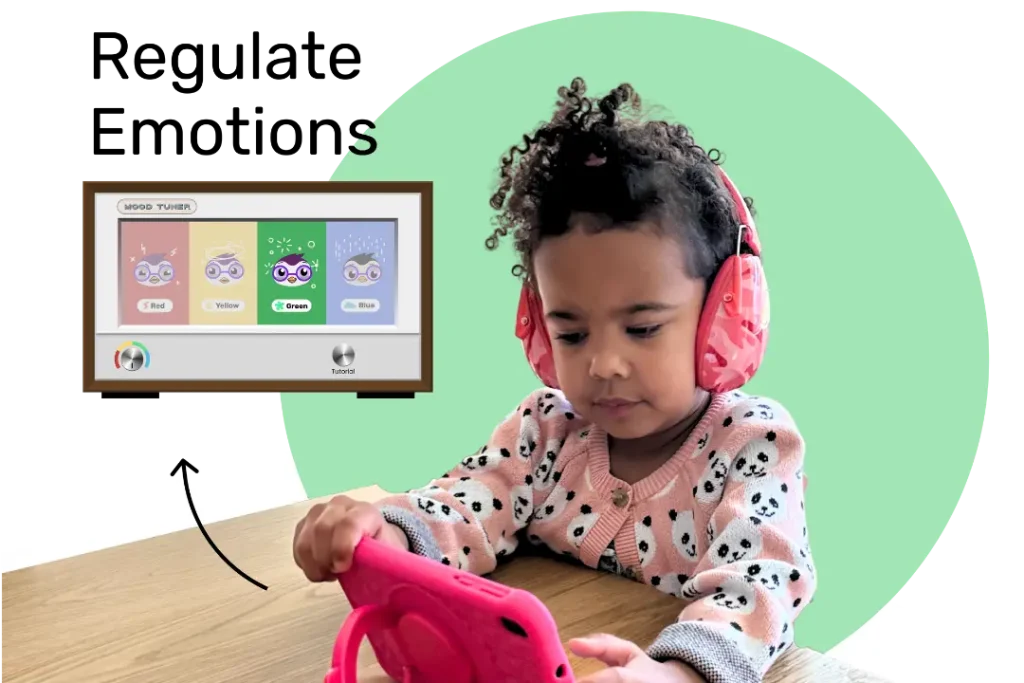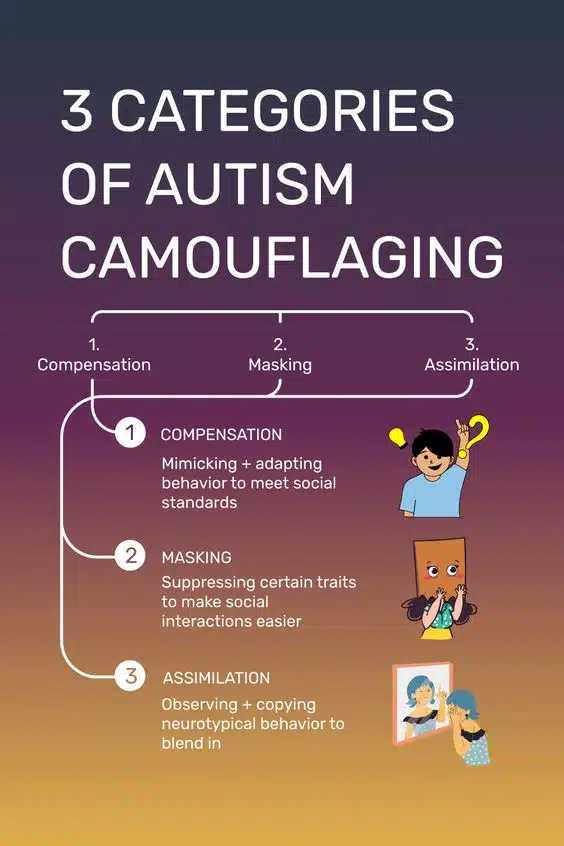Autism can affect a person’s social and communication skills, as well as their behavior. Many individuals with autism display symptoms that are commonly known as “challenging behaviors.” These behaviors can range from hyperactivity and aggressiveness to repetitive behaviors. Or a lack of expressive language. There are many therapies to help people with autism learn to adapt certain behaviors to be more independent. Individuals with autism may feel they should hide their traits further to avoid any negative stigma. This is autism camouflaging. But how does it affect an autistic person’s daily life? Take our brief autism masking test for kids below!
Table of Contents
Autism Camouflaging
Camouflaging refers to the process of hiding or minimizing certain behaviors. People with autism camouflage their symptoms to blend into a situation or environment. This technique works by “masking” autistic traits while engaging in more socially accepted behaviors. For example, someone who’s chatty but has trouble with eye contact may limit how much they talk to avoid appearing awkward to others. People with autism camouflage to appear “normal” in social situations. It affects how they interact with others on a day-to-day basis.
Goally | Visual Scheduler for Autism
Does your child struggle with getting ready in the morning independently? Goally’s routine app on the best tablet for kids breaks down large tasks into small, achievable steps for autistic kids. Create custom routines with your own videos & pictures for every step.
Camouflaging Subtype: Compensation
Compensation is when a person with autism uses strategies from previous experiences to make up for difficulties with socializing. Examples of compensatory strategies include using memorization techniques instead of understanding concepts. Someone with autism may camouflage by memorizing neurotypical body language or facial expressions. This can be from observing an actor’s movements in television or movies. Or by looking at how their peers engage in daily interactions. They may also learn how to mimic these behaviors from reading books. They’ll then use these memories to adapt their behavior in everyday interactions to try and match neurotypical social standards.

Camouflaging Subtype: Masking
Autism masking involves hiding or suppressing autistic traits to fit into a social setting. However, unlike camouflaging, which typically focuses on reducing certain traits while emphasizing others, masking involves hiding all aspects of autism to present a “normal” facade. In many cases, this facade will look so normal that even trained professionals may not be able to detect any signs of autism during an evaluation or interview process. Masking requires an intense level of self-awareness and control. It’s an effort to avoid exclusion and to make social interactions go more smoothly. Take our autism masking test for kids below!
Camouflaging Subtype: Assimilation
When it comes to autism, some individuals use a technique called assimilation to fit into society. Assimilation goes beyond masking and involves constantly performing and imitating the behavior of neurotypical people. It’s like blending into a crowd to be part of social situations that may otherwise be challenging. However, assimilation has its downsides. It relies on observation rather than genuine understanding, and individuals practicing assimilation may feel pressure to conform to what they perceive as the “normal” behavior. This can lead to feelings of shame and guilt if they struggle to keep up with the performance consistently over time. It’s important to understand the complexities of autism masking and assimilation to better support individuals on the spectrum.

Effects of Autism Camouflaging
Research suggests that those who camouflage their symptoms are more likely to have an autism diagnosis later in life than those who don’t. Because camouflagers often miss out on early interventions like Applied Behavior Analysis (ABA) therapy or speech-language therapy, their quality of life can be affected well into adulthood.
Compensation, masking, and assimilating aim to help people with autism connect with neurotypicals. But it can make them disconnected from themselves. While these techniques work in the short term, they can become overwhelming. In some cases, these behaviors lead to burnout and depression because of how much energy autism camouflaging requires. Have you taken our autism masking test for kids? By becoming aware of how masking, compensation, and assimilation can impact an individual with autism’s mood or outlook on life, we can create an environment where people with autism don’t constantly feel like they must hide who they truly are from those around them.
Goally | Kid’s Tablet for Building Emotional Regulation Skills
Is your child struggling with understanding and managing their emotions? Goally teaches emotional regulation skills in a fun and interactive way!

The Mood Tuner app encourages kids to look inwards and identify their feelings, helping them understand what’s going on inside. Once they’ve recognized their emotions, they can choose from a variety of exercises designed to help them self-regulate and find their balance.
In summary, understanding and identifying autism masking behaviors in kids through an autism masking test is critical for their overall well-being. By uncovering these masked behaviors, caregivers and parents can offer personalized support and tailor learning experiences to the needs of their neurodivergent kids. As we’ve explored in this blog, recognizing and addressing masking can lead to a more authentic, happier, and fulfilling life for children with thinking and learning differences. Keep in mind, this journey requires patience, empathy, and collaboration with professionals to ensure the most effective strategies and interventions are implemented. Stay proactive and be mindful of the signs of autism masking, as fostering a supportive and nurturing environment is the ultimate goal for helping your kids thrive.
This post was originally published on 02/27/2023. It was updated on 06/15/2023.

Goally
We help parents teach their kids life skills, like doing bedtime and morning independently. Backed by science, we incorporate evidence-based practices and expert-informed designs in all of our apps and content.







